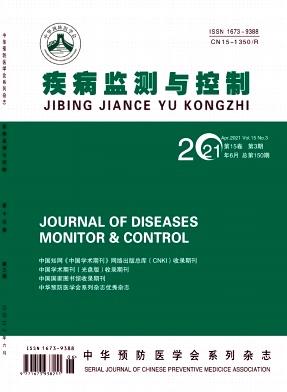吉隆坡联邦直辖区爆发地点登革热媒介的主要繁殖容器
引用次数: 1
摘要
登革热是一种蚊媒疾病,在热带和亚热带地区迅速传播。估计有25亿人生活在登革热流行国家,每年发生数百万例病例。确定关键的繁殖容器对预防登革热流行很重要。本研究旨在确定吉隆坡吉榜区登革热暴发地点的关键繁殖容器并评估登革热传播风险。2016年1月至2017年12月,在38个不同的疫情发生地进行了昆虫学监测。对室内和室外装水容器进行了检查,看是否有蚊子幼虫。采集的所有幼虫均进行种类鉴定、饲养容器类型记录,并计算幼虫的House指数、Container指数和Breteau指数。在2067个集装箱中,检出伊蚊幼虫227个(10.98%)。主要养殖容器类型为塑料容器(31.72%)、水桶(22.47%)、排水沟(18.06%)和花盆(14.98%)。HI、CI、BI分别为0 ~ 52.94、1.72 ~ 32.76、2.33 ~ 75.00。本研究发现的主要伊蚊幼虫孳生容器可指导卫生服务提供者教育居民消除研究区常见的室内和室外伊蚊孳生容器。本文章由计算机程序翻译,如有差异,请以英文原文为准。
Key Breeding Containers of Dengue Vectors in Outbreak Localities in Federal Territory of Kuala Lumpur
Dengue is a mosquito-borne disease that rapidly spreads throughout tropical and subtropical regions. An estimated 2.5 billion people live in dengue-endemic countries and millions of cases occurring each year. Identifying key breeding containers are important to prevent dengue epidemics. This study aims to identify key breeding containers and to evaluate the risks of dengue transmission in the dengue outbreak localities in Kepong District, Kuala Lumpur. Entomological surveillance was done between January 2016 to December 2017 in 38 different outbreak localities. Both indoors and outdoors water-holding containers were inspected for the presence of mosquito larvae. All collected larvae have identified the species, types of breeding containers were recorded, and three larval indices, House Index (HI), Container Index (CI), and Breteau Index (BI), were calculated. Of the 2,067 containers inspected, 227 (10.98%) containers were positive for Aedes larvae. The four main breeding container types in this study were plastic containers (31.72%), water drums (22.47%), drains (18.06%), and flowerpots (14.98%). The HI, CI, and BI varied from 0 to 52.94, from 1.72 to 32.76, and from 2.33 to 75.00, respectively. Key breeding containers of Aedes larvae found in this study provide guidance for health service providers to educate residents to eliminate the common indoors and outdoors Aedes mosquito breeding containers in the study area.
求助全文
通过发布文献求助,成功后即可免费获取论文全文。
去求助
来源期刊
自引率
0.00%
发文量
5934
期刊介绍:
"Journal of Diseases Monitor and Control" was founded in 2007 and is a series of journals of the Chinese Association of Preventive Medicine. It was initially sponsored by the People's Hospital Affiliated to Inner Mongolia Medical University. In 2018, it was officially changed to Inner Mongolia Medical University with the approval of the Central Propaganda Department. It highlights the characteristics of "monitoring" and "control", focusing on the fields of preventive medicine, public health, epidemiology, etc., while taking clinical medicine into consideration. It publishes advanced theories, technical methods, measures and experiences in all the above aspects.

 求助内容:
求助内容: 应助结果提醒方式:
应助结果提醒方式:


